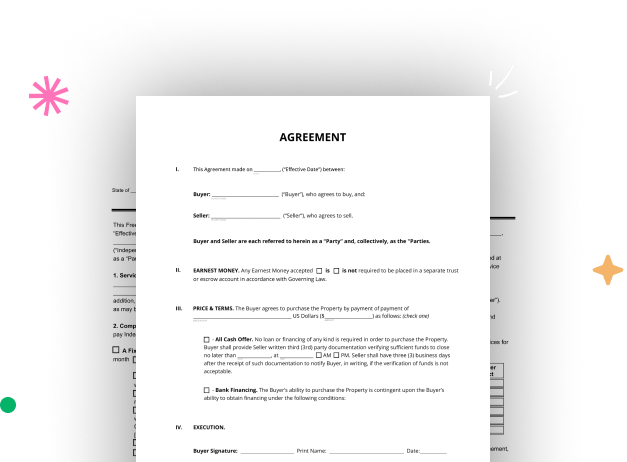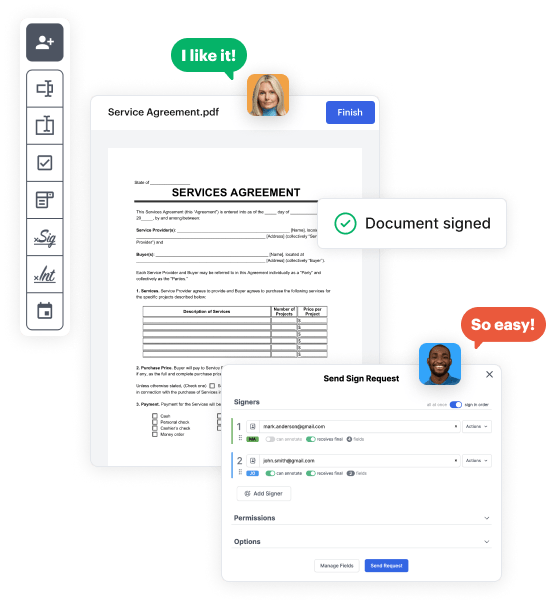

First, sign in to your DocHub account. If you don't have one, you can easily sign up for free.
Once signed in, access your dashboard. This is your main hub for all document-centric processes.
In your dashboard, choose New Document in the upper left corner. Pick Create Blank Document to build the Real Estate Legal Document from the ground up.
Place various elements like text boxes, images, signature fields, and other fields to your form and designate these fields to certain recipients as required.
Customize your template by inserting walkthroughs or any other crucial information using the text option.
Meticulously review your created Real Estate Legal Document for any errors or essential adjustments. Take advantage of DocHub's editing tools to perfect your form.
After finalizing, save your copy. You may choose to keep it within DocHub, export it to various storage solutions, or forward it via a link or email.